A (Minor) Christmas Miracle at the Salton Sea
Folks,
This one is considerably off the beaten path for GRL, but I wanted to share the story. My ambivalence about publishing it was resolved today when I came across, quite accidentally, two other stories about the Salton Sea. So here is my little story, replete with information freely plagiarized from Wikipedia and elsewhere.
A (Minor) Christmas Miracle at the Salton Sea
A Brief History of the Salton Sea
Considering what it is–a 55 x 25 km, 376 square mile “sea” (actually an inland saline lake)–it’s amazing how few people know about it, even people that live only 150 miles away in Los Angeles.
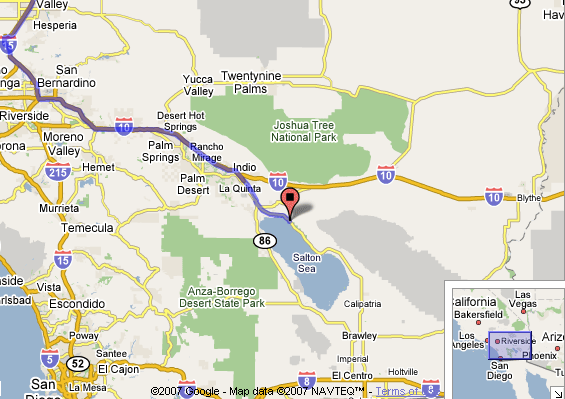
For one thing, it’s a freak of nature. Millions of years ago, its waters were part of the Gulf of Mexico. Then about 10,000 years ago, the waters receded, leaving a body of saltwater in the Salton Basin, a large depression about 65 meters below sea level which includes Indio, California. About 700 A.D., this body was refilled with freshwater when the Colorado River silted up, and overflowed northward, changing course, instead of flowing straight to the Gulf. That created a lake known as Lake Cahuilla, much larger at 180 x 50 km, which was the home of the Cahuilla and the Kumey native Indians for perhaps 1000 years, but which apparently slowly dried up.
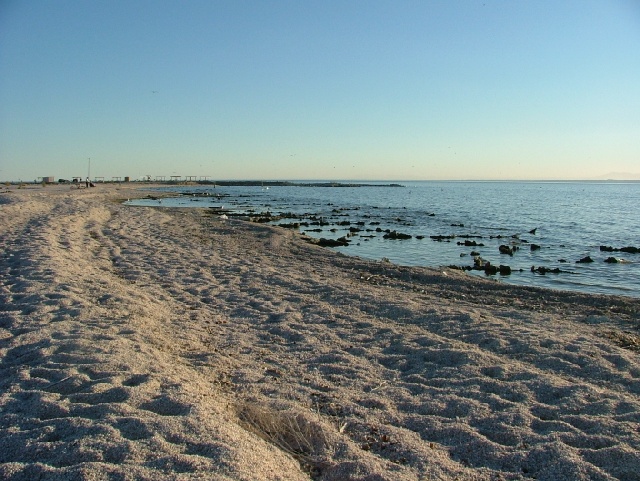
Then it began to change again:
Evidence of an ancient shoreline suggests that Lake Cahuilla occupied the basin until about 300 years ago. From 1824 to 1904, Colorado River flows flooded the Salton Basin no fewer than eight times. For example, an 1840 flood created a salt lake three quarters of a mile long and a half a mile wide and, in June 1891, another outpouring of Colorado River water created a lake 30 miles long, 10 miles wide. It is uncertain as to how many times water has filled the Basin over the centuries but human intervention is responsible for inundating the basin only once.
That human intervention came in 1901, when the California Development Company dug irrigation canals from the Colorado River, to allow agricultural development of the area’s fertile grounds, which lacked only water. But then a big flood in 1905 caused the Colorado to breach a dike in the Imperial Valley, sending almost all of the river’s flow into the formerly dry basin, which at that time was a major salt-mining operation. It took two years to stop the flow, and this created the “Salton Sea” that we have today.
In the 20s, it developed into a very popular recreation destination, offering boating, fishing, and habitat for migrating wildfowl. By the 50s it had a few popular resorts on its shores.
The lack of a drainage from the Sea, however, and the inflows from agricultural runoff rich in dissolved salts and fertilizer, has caused its waters to become gradually more salty. Water from the New River in particular has resulted in large algal blooms and elevated bacteria levels. The New River is considered to be the single most polluted river in America.
By the 60s, it had become so salty that large fish die-offs had started to occur, and the ecosystem started downhill.
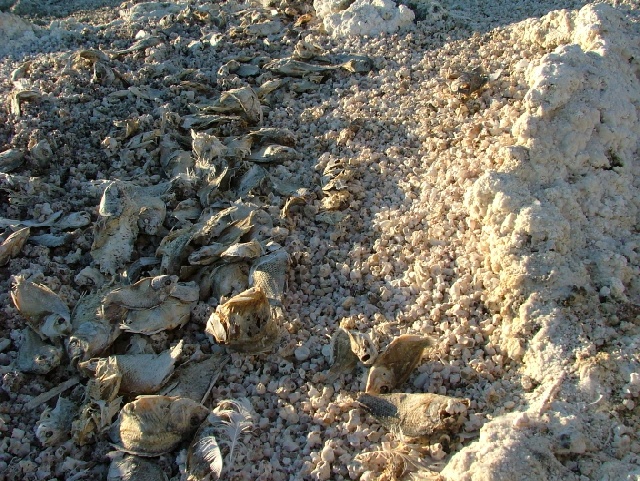
It now has a salinity of more than 40%, which is saltier than ocean water. Once it reaches 44%, experts say, only the tilapia that were introduced into the sea starting in the ’30s will still survive.
In turn, the bacteria that resulted from the fish die-offs have killed off many of the birds, particularly in large-scale die-offs of grebes and pelicans in 1992 and 1996. Today, the sea still supports 30% of the remaining population of the endangered American White Pelican.
Today, it’s a pretty desolate area, apart from the well-watered and healthy-looking acres of oranges, peppers and other crops that surround it. It looks like a movie set, with weathered and broken signs along the road advertising fun and exciting resort destinations ahead; boarded up eateries and motels; and a barren sea, clustered with battered looking mobile home parks on its shores. The people who still live there, as far as I have been able to gather from a couple of different movies I’ve seen about it, anyway, are either Latino farmworkers, white refugees from society, meth heads and meth cooks, a small poor black population that was moved there en masse in the aftermath of a California earthquake some decades back, or park rangers. It’s a very strange, and not a terribly hospitable looking place. Although apparently the locals are pretty friendly, based on those interviewed in the excellent and very entertaining 2006 documentary, Plagues and Pleasures on the Salton Sea
My Story
So as I drove along I-10 a week ago, making my way home from Christmas with the family, and saw the sign for the turnoff to the Salton Sea, I took it. I just had to see for my own two eyes what this nutty place was about, apart from the movies.
I debated with myself whether it was a good call for at least the first 20 minutes, as I wound my way through an endless parade of RVs and travel trailers hauling ATVs and extra gas. I assume there was some sort of ATV gathering going on out there, because there were so many of them. I took the longest drive of my life around a gas station filled with dozens of 45+ ft. long vehicles, just to get to a pump, still debating the detour.
The Salton Sea is about 25 miles off the interstate, on four-lane state highways with interminable traffic lights. Plus I was on my way to a rendezvous with several different parties in L.A., including one at LAX. The schedule was a little tight. But my curiosity got the better of me, and I continued on.
When I got there, it was really a strange sight. Salt deposits rise out of the water like stalagmites.
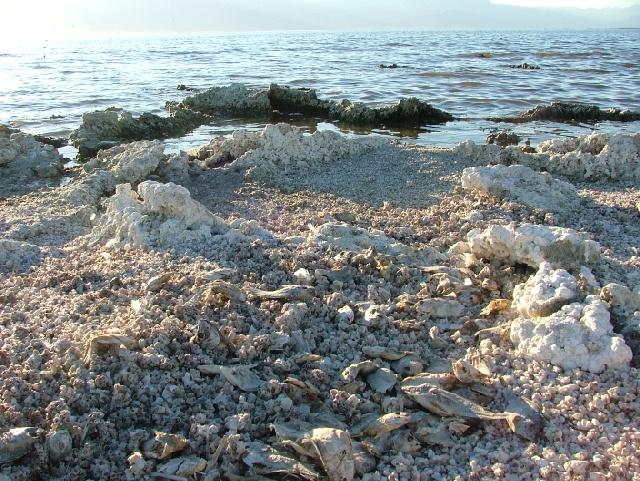
Old fish skeletons are everywhere.
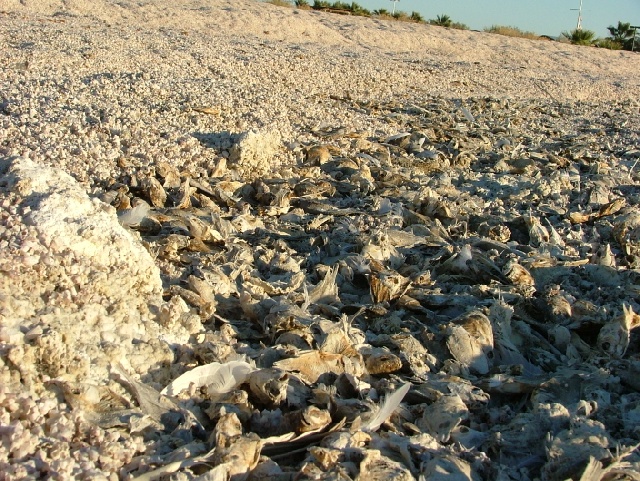
The beach is made not of sand, but crushed shells, mounds and mounds of them.
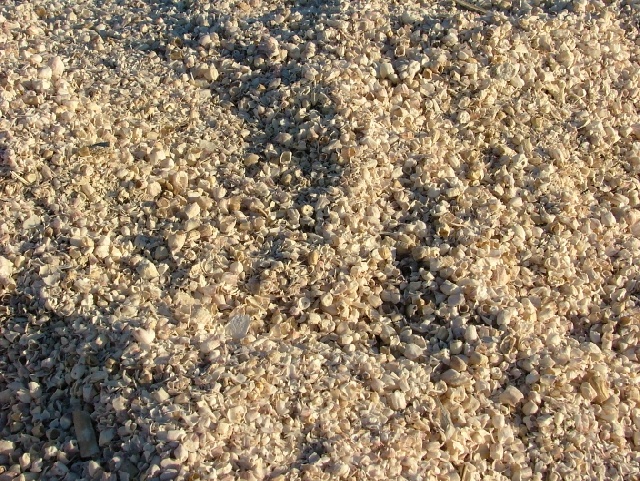
The surface of the water is unused, and its color is thick and green with algae. To my surprise, though, it hardly smelled at all. The whole area just seemed all dried out.
After a while taking the pictures you see here, I walked over to the visitor center to check out the exhibits. The place was closing and I could see the two rangers inside, locking up. I contented myself with the outdoor kiosk displays.
After a few minutes a middle-aged Asian woman approached me, and asked me if I had a coat hanger, as they had locked themselves out of their car. I was initially suspicious, and looked around, realizing that aside from myself and the two rangers, there was nobody there other than her, her two young girls around age 9, and presumably her husband. It was about 4:30 pm and it was starting to get dark, and they were obviously in a fix. This really wasn’t a good place for a nice young Asian-American familly to be hanging out after dark.
Well, I didn’t have a coat hanger, but I did happen to have a slim jim. I found it in a parking lot or something years ago, and stashed it away in the back of my truck, where it has stayed. I haven’t used it once in all those years, although it was locked in the truck several times, as I paid a AAA guy to come and let me back in.
So I went and got it and gave it a whirl. The whole while, the lady and her two daughters had prayed, and looked on anxiously as the husband tried to help me. I wasn’t able to use it as it is designed to be used, though. I have no skill and no experience with that tool. I could get it down the front of the window and cause the handle to wiggle, but that was it. But I was, after a while, able to use it on the inside of the window, to reach and pull the door lock lever and let them back in.
They were so happy. The father directed one of his girls to “give that man a hug!” and, reluctantly, she did. They were worried, he told me, as it was getting dark and the nearest locksmith, in Indio, was at least an hour away. “You must have been sent by the angels!” the mother said. They offered me money, beverages, anything, but I declined and just walked back to my truck with a wave. “God bless you!” she shouted after me. “God bless you too!” I tossed over my shoulder.
I was struck for a moment by the beauty of being in a moment like that, particularly being on the helping end of it, where you just happen to get the help you need at the right moment, against the odds. It was a minor Christmas miracle.
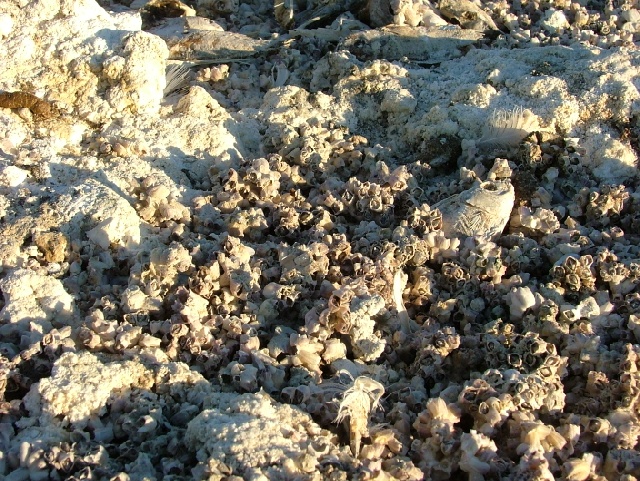
What Next?
Various proposals to save the sea have been offered since the 50s, but all have their drawbacks and serious risks. A debate continues to rage over whether the sea should even be saved, with environmentalists on both sides.
Before he died, Senator Sonny Bono had made restoring the Salton Sea to health and properity his personal ambition, and wanted it to be his legacy. He succeeded in getting the California State Legislature to prepare a restoration plan and do an environmental impact study. 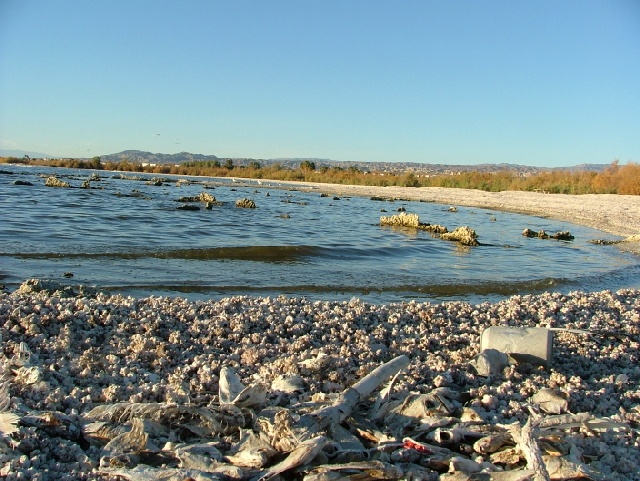
Today I received an email from the Defenders of Wildlife, an email list to which I subscribe. They are asking us to join the fight to save the Salton Sea, on behalf of the many migratory birds who depend on it as a stopping-over point. You can join there campaign here.
I also learned today that the Salton Sea is one of the few locations in the southwest with a successful geothermal generating plant. I saw the plant as I drove by, but I didn’t know what it was. I can tell you that it was far more discreet than the Palo Verde nuclear station I also passed along I-10, and demonstrated no emissions whatsoever.

I mean, look at that thing! I had to wonder what the environmental impact might be of such a huge cloud generator as that nuclear station.
To learn more about the Salton Sea and how you can get involved with the local campaign to save it, go the web site of the Salton Sea Coalition.
–C
